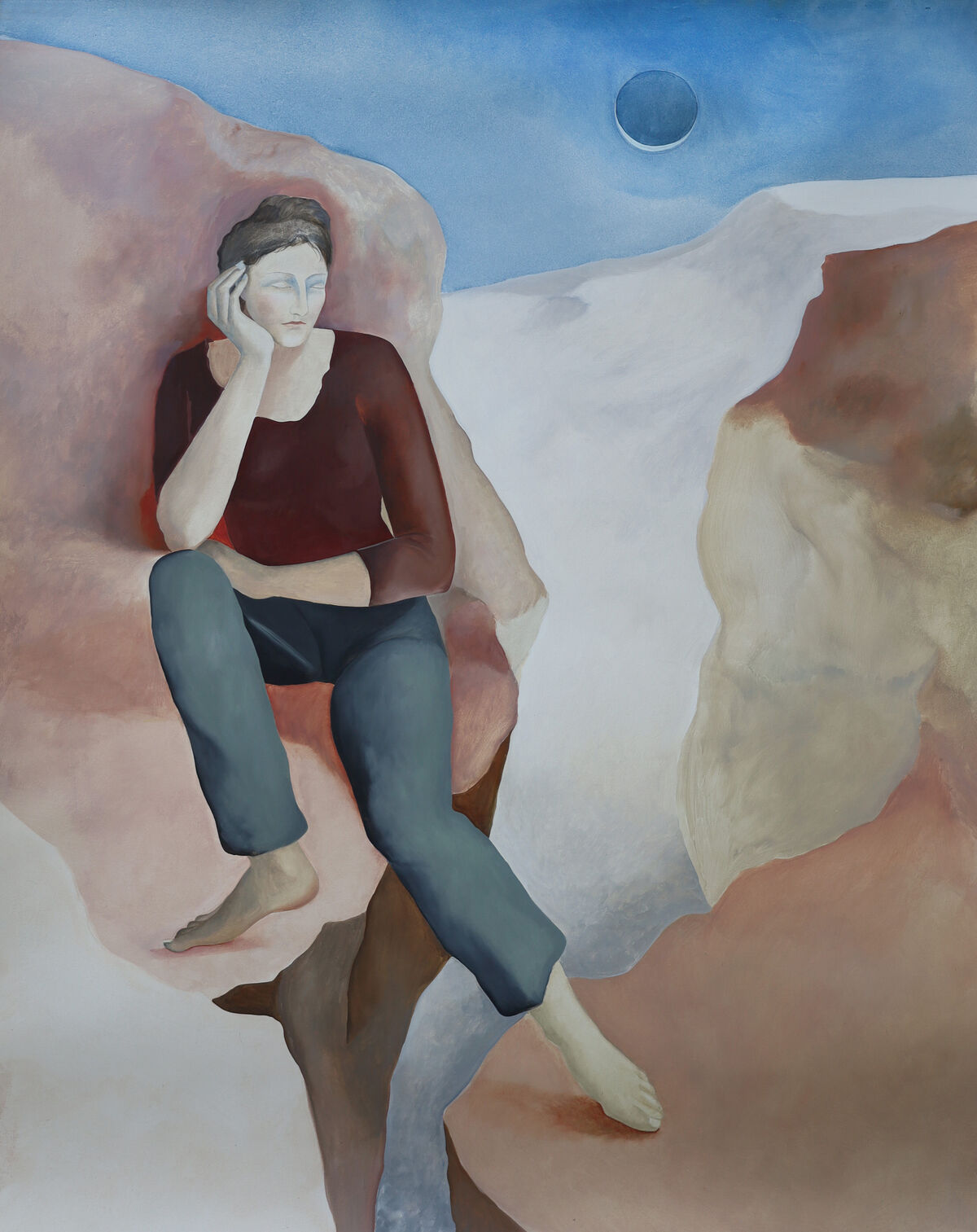
Raphael Barratt: Equinox
Huxley-Parlour
20 days left
Huxley-Parlour are delighted to present Equinox, Raphael Barratt’s first exhibition
with the gallery, opening at our Maddox Street space in October 2024. The exhibition will present twelve paintings, made over the past year. Central to Barratt’s work is the interplay between figure and landscape; immersing her characters in dreamlike worlds, where emotion and atmosphere intertwine, Barratt invites the viewer into an ambiguous ground between collective memory and our own inner landscapes.
Negotiating the boundary between figuration and abstraction, Barratt shifts the focus between clarity, detail, and suggested space. Graphic lines juxtaposed with swathes of painterly gestures add movement to figures and forms and introduce a complexity of depth and perspective. Luminous layers of thin oil paint echo the textures and tones of early fresco paintings, especially those of Piero Della Francesca and Giotto. Barratt’s attention to drawing is deliberate; each line not only defines form but contributes to the mood and tension within the composition. Informed by her study of Indian miniature painting in Jaipur, the artist developed an understanding of the intimacy of space and distilled environments, as well as the exacting equilibrium between line and colour.
The symbolic figuration of these historical influences are felt in Barratt’s painting. Her characters are not studies in likeness, rather they sit somewhere between the personal and the mythological. Quiet deities and mischievous shades occupy the works in the exhibition, acting as conduits through which Barratt explores particular emotions. In Persephone Alone, a nude female figure wanders through a wooded landscape, bathed in blue-greys and icy tones, that lends a feeling of melancholy, heightening Persephone’s solitude. The myth of Persephone speaks of the inevitable cycle of grief and loss leading towards renewal, and the return of spring. Yet, her strong pose implies a lack of constraint and a commanding of her vulnerabilities.
In this new body of work, Barratt excavates the uneasy tensions between presence
and absence, remoteness and immediacy. As the title of the exhibition suggests, the
paintings are situated in a moment of transition, underpinned by an intensity that is
marked by flux: figures that share a composition never meet each other’s gaze, a wine glass lies on its side, its contents spilling out across a gingham tablecloth, and figures are rendered only partially visible. The artist’s landscapes negate topographical distinction, so too do her interior spaces hint at domesticity, without fully describing it. Removing signifiers of modernity, her landscapes operate on a liminal plane that at once feels rooted in the ancient and mythological while simultaneously existing in the present. Navigating temporal ambiguities, they are transformed into thresholds where a multitude of narratives coalesce, stretching towards the past and continuing to unfold in the present.